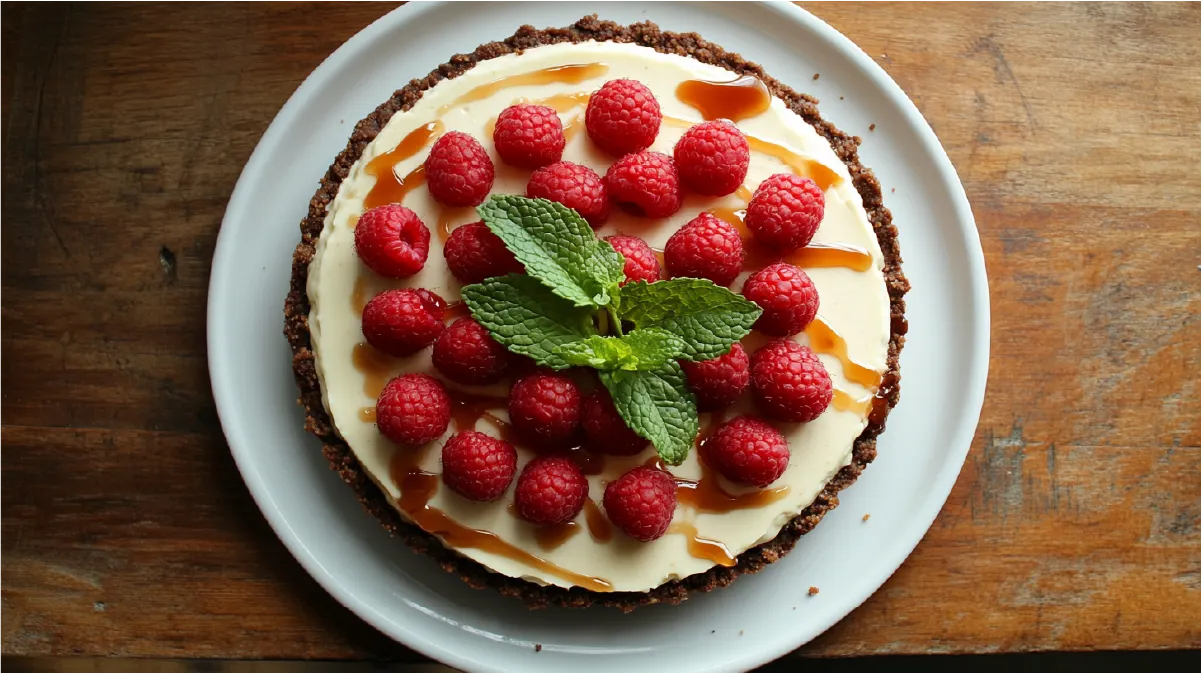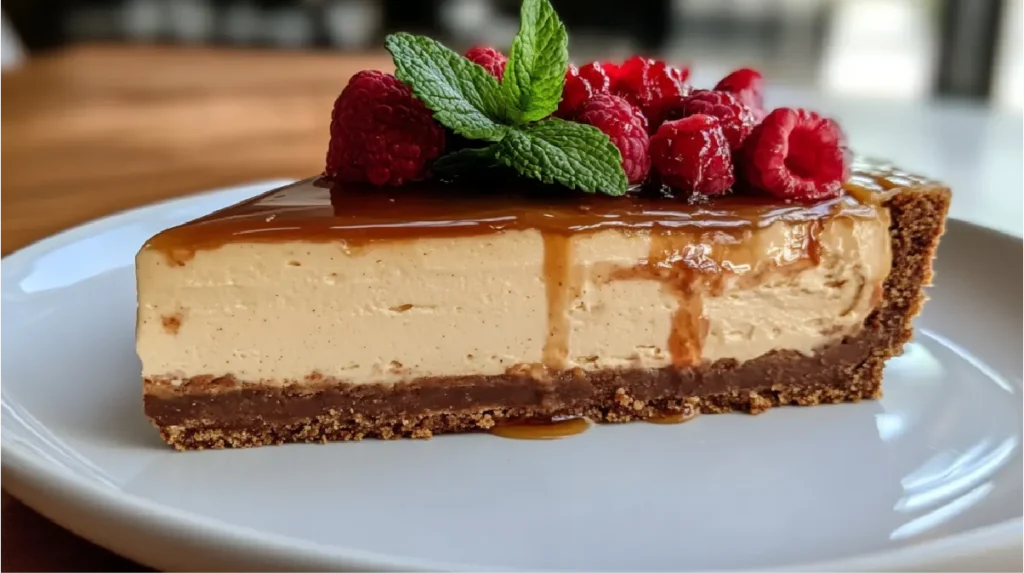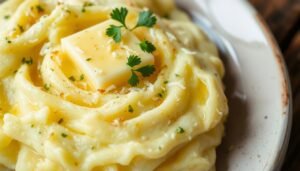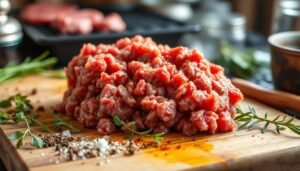Looking to make the perfect Philadelphia cheesecake that’s creamy, smooth, and irresistible? You’re in the right place! In this guide, you’ll discover not just the classic recipe but also helpful tips to avoid common baking mistakes. Moreover, we’ll explore how to elevate your cheesecake with a speculoos crust and creative toppings like puff pastry with jam. Whether you’re baking for a party or simply treating yourself, this step-by-step recipe will make sure you get it right every time. Keep reading to unlock the secrets of a flawless cheesecake that will impress everyone!
What Makes Philadelphia Cheesecake So Creamy and Irresistible?
The secret to a perfect Philadelphia cheesecake lies in the balance of quality ingredients that each play a crucial role in delivering its signature taste and texture. At the heart of this recipe is Philadelphia cream cheese, known for its smooth consistency and rich flavor, making your cheesecake delightfully creamy. Eggs give structure to the batter while maintaining a light, airy texture. Meanwhile, sour cream adds a subtle tang that balances sweetness and enhances the overall flavor.
A well-prepared crust—whether from digestive biscuits or speculoos cookies—provides a crunchy contrast to the creamy filling. Additionally, using melted butter helps the crumbs stick together, forming the perfect base. Vanilla extract lends aromatic sweetness, while toppings like fresh berries or puff pastry with jam can elevate both the flavor and presentation. Every ingredient plays a part, ensuring your cheesecake turns out perfectly delicious.
What You Need to Make the Best Philadelphia Cheesecake
Creating the perfect Philadelphia cheesecake starts with gathering the right ingredients. Below, you’ll find each component broken down into categories to ensure a smooth baking process. These ingredients work together to deliver the ideal texture, flavor, and appearance for your dessert.
Cheesecake Filling Ingredients
These ingredients ensure the smooth and creamy texture that defines a recipe cheesecake Philadelphia style.
- Philadelphia cream cheese (3 packs, softened): Softening makes it easier to blend, preventing lumps in your batter.
- Granulated sugar (1 cup): Adds sweetness and helps create a smooth texture. You can use brown sugar for a caramel-like flavor.
- Eggs (3 large): Add structure to the batter. Beat them in one by one to prevent overmixing.
- Sour cream (1 cup): Enhances the tanginess and balances the sweetness. You can substitute it with Greek yogurt if needed.
- Vanilla extract (1 tsp): Adds depth of flavor and a pleasant aroma to the filling.
Crust Ingredients (Speculoos or Digestive Biscuits)
The crust forms the base of your cheesecake, providing a satisfying crunch.
- Speculoos cookies or digestive biscuits (2 cups, crushed): Gives the cheesecake a firm base. Speculoos add a warm, spiced note.
- Melted butter (1/3 cup): Binds the crumbs together to form a solid crust. Add a pinch of salt if using unsalted butter.
Optional Toppings and Sides
Add a creative flair with these extra touches, perfect for serving alongside your cheesecake.
- Fresh berries (strawberries, raspberries): Provide a fruity contrast to the decadent filling.
- Puff pastry with jam: a delicious side option that pairs beautifully with cheesecake. Use your favorite jam for extra flavor.
- Salted caramel drizzle: Adds a sweet and salty finish to each bite.
Ingredients
Here’s everything you’ll need to make a delicious Philadelphia cheesecake. Make sure to have all ingredients at room temperature for the smoothest results. Optional ingredients are marked accordingly to help you customize the recipe to your liking.
Cheesecake Filling
3 packs (24 oz) Philadelphia cream cheese, softened
1 cup granulated sugar
3 large eggs
1 cup sour cream (or Greek yogurt as a substitute)
1 teaspoon vanilla extract
Crust
2 cups speculoos cookies or digestive biscuits, crushed
1/3 cup melted butter (add a pinch of salt if using unsalted butter)
Optional Toppings and Sides
Fresh berries (strawberries, raspberries, blueberries)
Puff pastry with jam (as a side or decorative element)
Salted caramel drizzle (optional for a sweet-salty twist)
Step-by-Step Guide to Making Philadelphia Cheesecake
Follow these detailed steps to create the perfect Philadelphia cheesecake with a creamy filling and flavorful crust. Each step ensures smooth preparation so even beginners can achieve great results.
Preheat the Oven to 160°C (325°F)
Start by preheating your oven to 160°C (325°F). This ensures that the cheesecake bakes evenly, giving it the ideal texture. Position the oven rack in the center to allow even heat distribution throughout the baking process.
Prepare the Crust with Speculoos or Digestive Biscuits
For the base, crush 2 cups of speculoos cookies or digestive biscuits into fine crumbs. Mix the crumbs with 1/3 cup of melted butter to bind them. Press the mixture firmly into the bottom of a springform pan, ensuring an even layer. Place the crust in the fridge for 10 minutes to set while you prepare the filling.
Make the Creamy Philadelphia Cheesecake Batter
In a large bowl, beat 3 packs (24 oz) of Philadelphia cream cheese with 1 cup of sugar until smooth and creamy. Add the eggs one at a time, mixing well after each addition to avoid air bubbles. Stir in 1 cup of sour cream and 1 teaspoon of vanilla extract to enhance flavor and balance the sweetness. Avoid overmixing to prevent cracks during baking.
Pour the Batter Over the Chilled Crust
Take the crust out of the refrigerator and pour the cheesecake batter over it. Use a spatula to spread the batter evenly across the pan, ensuring the top is smooth. This step helps the cheesecake bake uniformly for the best texture.
Bake the Cheesecake (Cuisson) Gently
To prevent cracks, place the springform pan inside a larger roasting pan. Pour hot water into the roasting pan until it reaches halfway up the sides of the springform pan (this is called the water bath method). Bake the cheesecake for 50–60 minutes until the center is slightly jiggly but not runny.
Cool the Cheesecake Gradually
Once baked, turn off the oven and leave the cheesecake inside with the door slightly open for 1 hour. Gradual cooling prevents the top from cracking. After an hour, transfer the cheesecake to a wire rack and let it cool to room temperature before chilling.
Chill the Cheesecake Overnight
Cover the cooled cheesecake with plastic wrap and place it in the refrigerator for at least 4 hours, preferably overnight. Chilling allows the flavors to develop and the texture to firm up, making each slice smooth and creamy.
Add Optional Toppings and Serve
Top your cheesecake with fresh berries like strawberries or raspberries for a fruity twist. For an indulgent treat, drizzle salted caramel over each slice. Alternatively, serve the cheesecake alongside puff pastry desserts with jam to impress your guests with variety.
Slice and Enjoy Your Perfect Philadelphia Cheesecake
Use a sharp knife to cut clean slices, wiping the blade between cuts for a neat presentation. Serve the cheesecake chilled, and enjoy every creamy, flavorful bite. This dessert pairs beautifully with coffee or tea, making it the perfect treat for any occasion.
Extra Tips to Perfect Your Philadelphia Cheesecake
- Soften the cream cheese: Leave your Philadelphia cream cheese at room temperature for at least 30 minutes to make it easier to blend and prevent lumps.
- Use a water bath: Baking the cheesecake in a water bath ensures even cooking and prevents cracks. Wrap the pan in foil to avoid leaks.
- Don’t overmix the batter: mix only until the ingredients are combined. Overmixing can introduce too much air, which may cause the cheesecake to crack.
- Add cornstarch or flour: A tablespoon of either can help stabilize the batter and reduce the risk of cracks.
- Test doneness with a jiggle: The center should jiggle slightly when done—this means it will set perfectly as it cools.
- Cool slowly to prevent cracks: Let the cheesecake cool in the oven with the door ajar for one hour before transferring it to a wire rack.
- Chill overnight for the best texture : Allowing your cheesecake to rest in the fridge enhances the flavors and gives the filling time to firm up.
- Get creative with toppings: Try adding puff pastry desserts with jam on the side or drizzle salted caramel for a fun twist.
- Use a hot knife for clean slices: Dip your knife in hot water, wipe it, and cut—repeat between each slice for the neatest presentation.

Tips and Tricks for Philadelphia Cheesecake
These tips will help you make your Philadelphia cheesecake smooth, flavorful, and beautifully presented. Whether you’re looking for preparation hacks or creative serving ideas, these tricks will simplify the process and ensure your cheesecake turns out perfectly every time.
Preparation Hacks for Philadelphia Cheesecake Cuisson (Baking)
These tips will help you avoid common preparation pitfalls and ensure the perfect bake.
- Use room-temperature cream cheese. This ensures the batter mixes smoothly and without lumps.
- Chill the crust before adding the filling. A cold speculoos crust holds its shape better during baking.
- Tap the pan after filling: This removes air bubbles from the batter, preventing cracks on the surface.
Flavor Enhancements for Philadelphia Cheesecake
Elevate the taste of your cheesecake with these creative ideas.
- Add lemon zest to the batter. This adds a refreshing citrus twist.
- Try a speculoos crust instead of Graham crackers. The spiced flavor enhances the overall taste.
- Serve with puff pastry desserts with jam: This pairing adds texture and sweetness to complement the creamy cheesecake.
Storage Tips for Cheesecake Philadelphia Cuisson
These storage tips will keep your cheesecake fresh and flavorful.
- Refrigerate the cheesecake overnight. This allows the flavors to develop and the texture to firm.
- Wrap leftovers in plastic wrap. This keeps the cheesecake moist and prevents it from absorbing fridge odors.
- Freeze individual slices: Wrap slices in foil and store them for up to 3 months for future indulgence.
Serving Ideas for Philadelphia Cheesecake
These serving tips will impress your guests and enhance the presentation.
- Use a hot knife for slicing: Warm the knife in water, then wipe it clean between cuts for neat slices.
- Garnish with berries and mint leaves: Simple garnishes can make the dessert look stunning.
- Drizzle with salted caramel or chocolate sauce. These toppings complement the rich, creamy filling perfectly.
Nutritional Information for Philadelphia Cheesecake
Enjoying a slice of Philadelphia cheesecake doesn’t have to derail your balanced diet. This dessert provides a satisfying mix of fats, carbohydrates, and proteins, making it a decadent treat that can fit into most diets when enjoyed in moderation. While the cheesecake is calorie-dense due to its cream cheese and buttery crust, it also offers essential nutrients such as calcium and protein. However, those watching their sugar or fat intake may want to consider smaller portions or substitutions (e.g., reduced-fat cream cheese).
Nutritional Information Per Serving (1 Slice)
| Nutrient | Amount per Serving |
| Calories | 350 kcal |
| Total Fat | 24 g |
| Saturated Fat | 14 g |
| Cholesterol | 120 mg |
| Sodium | 220 mg |
| Carbohydrates | 27 g |
| Sugars | 18 g |
| Protein | 7 g |
| Calcium | 10% DV |
Dietary Suitability of Philadelphia Cheesecake
Depending on the ingredients you choose, Philadelphia cheesecake can fit various dietary preferences or needs.
- Keto-Friendly Adjustments: Use almond flour for the crust and a sugar substitute like erythritol to reduce carbs.
- Gluten-Free Options: Replace the speculoos crust with gluten-free cookies or biscuits.
- Low-Sugar Variations: Swap out granulated sugar with a low-calorie sweetener to lower the total sugar content.
Comparison with Other Cheesecakes
Here’s how Philadelphia cheesecake compares to other common cheesecake varieties in terms of calories and fat.
- New York Cheesecake: Higher in fat due to heavy cream, averaging 420 kcal per slice.
- No-Bake Cheesecake: Often lower in calories but higher in sugar from added toppings.
Common Mistakes and Ingredient Issues with Philadelphia Cheesecake
Even a simple Philadelphia cheesecake can go wrong if specific steps are overlooked or the ingredients aren’t handled correctly. Avoiding these common mistakes will ensure your cheesecake is creamy, crack-free, and perfectly baked. From preparation errors to ingredient mishandling, this guide will walk you through how to prevent problems and make sure your dessert turns out just right.
Preparation Errors That Affect Philadelphia Cheesecake
Small preparation mistakes can have a significant impact on your cheesecake’s final texture and appearance.
- Overmixing the batter: Mixing too much adds air, causing the cheesecake to puff up and crack. Mix just until the ingredients are combined.
- Not softening the cream cheese: Cold cream cheese doesn’t blend smoothly and can result in a lumpy batter. Let it sit at room temperature for at least 30 minutes.
- Skipping the water bath: Without a water bath, the cheesecake may bake unevenly and develop cracks. Use hot water halfway up the sides of your pan for even cuisson (baking).
Ingredient Issues with Cheesecake Philadelphia Cuisson
Using the right ingredients correctly is critical to a smooth and flavorful cheesecake.
- Using low-fat cream cheese: This can result in a watery texture. Stick to full-fat Philadelphia cream cheese for the best results.
- Improper crust preparation: If the speculoos crust isn’t packed tightly, it may crumble when you slice the cheesecake. Press the crumbs firmly into the pan before chilling.
- Substituting sour cream with yogurt incorrectly: While yogurt can work, it may alter the flavor. Use Greek yogurt if you need a substitute to maintain creaminess.
Temperature Control Issues and Baking Mistakes
Baking the cheesecake at the wrong temperature can ruin its texture.
- Baking at too high a temperature: This causes the cheesecake to brown too quickly and crack. Bake at 160°C (325°F) for a slow, even bake.
- Not checking for the jiggle: A properly baked cheesecake should jiggle slightly in the center. Overbaking results in a dry texture.
- Skipping the cool-down process: Rapid cooling can cause cracks. Turn off the oven and leave the cheesecake inside with the door ajar for one hour.
Safety Concerns When Making Philadelphia Cheesecake
Safety is essential when working with perishable ingredients like eggs and dairy.
- Handling eggs safely: Wash your hands after handling eggs to avoid cross-contamination (see ‘safe egg handling practices (source)’).
- Storing the cheesecake properly: Refrigerate the cheesecake within 2 hours of baking to prevent bacterial growth.
- Avoiding spoiled ingredients: Check the expiration dates on cream cheese and sour cream to ensure they are fresh and safe to use.
Frequently Asked Questions About Philadelphia Cheesecake
This FAQ section covers some of the most common questions about making, storing, and enjoying Philadelphia cheesecake. Whether you need advice on baking techniques, ingredient swaps, or dietary adjustments, these answers will help you make the perfect cheesecake every time.
Q: Can I use low-fat Philadelphia cream cheese for this recipe?
Yes, but using low-fat cream cheese may result in a softer texture. For the creamiest cheesecake, stick with full-fat cream cheese.
Q: How do I prevent cracks on the surface of my cheesecake?
A: Use a water bath during baking, avoid overmixing the batter, and let the cheesecake cool gradually in the oven with the door slightly open.
Q: Can I substitute speculoos cookies with Graham crackers for the crust?
A: Absolutely! Graham crackers are a popular choice, but speculoos cookies add a warm, spiced flavor that complements the cheesecake beautifully.
Q: How long can I store Philadelphia cheesecake?
A: Store your cheesecake in the refrigerator for up to 5 days. If you want to keep it longer, freeze individual slices wrapped tightly in plastic wrap and foil for up to 3 months.
Q: Is Philadelphia cheesecake gluten-free?
A: The filling is naturally gluten-free, but you’ll need to use gluten-free cookies for the crust to make the entire cheesecake gluten-free.
Q: Can I make this cheesecake keto-friendly?
A: Yes! Use almond flour for the crust and replace the sugar with a low-carb sweetener like erythritol to make a keto-friendly version.
Q: How do I know when my cheesecake is fully baked?
A: The cheesecake is done when the center jiggles slightly. It will continue to set as it cools, so avoid overbaking.
Q: What toppings go well with Philadelphia cheesecake?
A: Fresh berries, salted caramel, or a drizzle of chocolate sauce pair beautifully. You can also serve it alongside puff pastry desserts with jam for a creative twist.
Conclusion
Well done! You’ve just created a delightful Philadelphia cheesecake that’s sure to be the star of any dessert table. With its creamy filling, buttery crust, and endless topping possibilities, this cheesecake offers a perfect balance of flavor and texture. Whether you followed the classic recipe or added your twist, we’re sure it turned out amazing!
We’d love to hear how your cheesecake came out—feel free to share your experience or tips in the comments. If you enjoyed making this dessert, be sure to follow us on social media for more recipes, baking hacks, and inspiration. Your feedback and creativity help us bring even better content to the table.
Now it’s time to slice, serve, and enjoy your cheesecake masterpiece. Don’t forget to take a picture and tag us—we can’t wait to see your creation!




